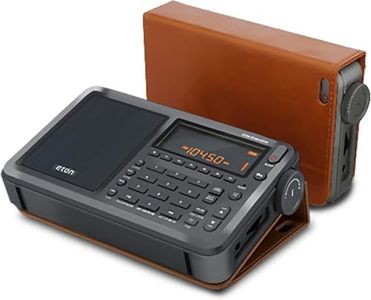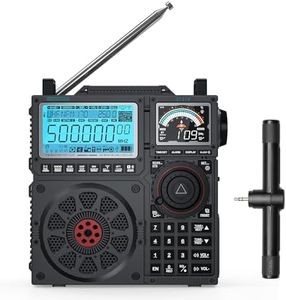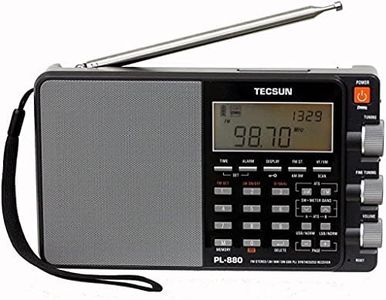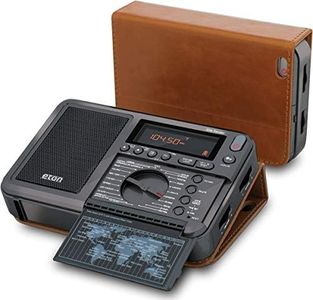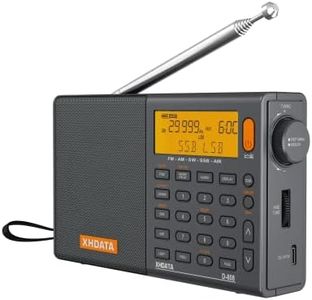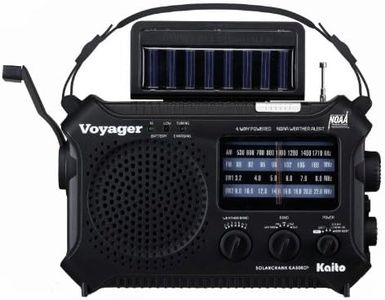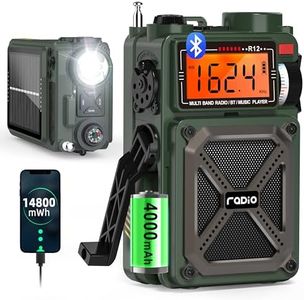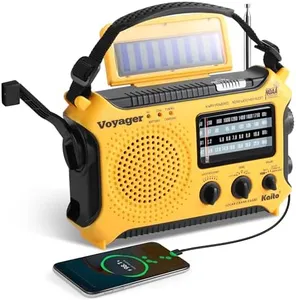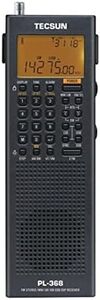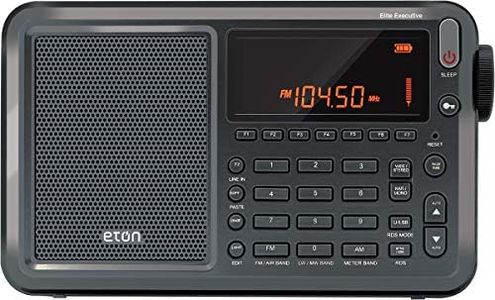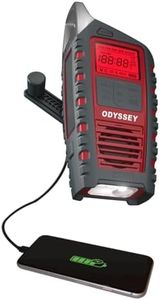We Use CookiesWe use cookies to enhance the security, performance,
functionality and for analytical and promotional activities. By continuing to browse this site you
are agreeing to our privacy policy
10 Best Shortwave Radios
From leading brands and best sellers available on the web.Buying Guide for the Best Shortwave Radios
Choosing a shortwave radio can be an exciting task, especially if you're looking to explore global broadcasts, listen to international news, or enjoy amateur radio transmissions. The right shortwave radio for you depends on how you plan to use it, whether at home, outdoors, or during travel. Understanding your core needs—like the places where you’ll use it, the kind of stations you want to receive, and your preferences for features—will help narrow down the best fit.Frequency RangeThe frequency range of a shortwave radio shows the span of signals it can receive. Shortwave broadcasts come in different bands, and a wider frequency range lets you access more international stations. Radios with smaller ranges may only get local or limited broadcasts, while wider ranges access more variety. To choose the right range, consider whether you’re looking for general listening (most news and entertainment shows fall within well-known shortwave bands) or want to search for unique or rare signals, which sometimes air at unusual frequencies.
Reception Modes (AM, SSB, etc.)Reception modes determine the types of broadcasts your radio can decode. Most standard shortwave radios have AM (amplitude modulation), but some also include SSB (single sideband), which is essential for listening to ham radio operators and certain overseas stations. If you only want to hear classic news or music broadcasts, AM is enough. If your goals include communication with hobbyists or listening to maritime or airplane transmissions, look for radios supporting SSB.
Antenna Type and CapabilityThe antenna plays a key role in receiving clear signals. Built-in telescopic antennas are common and convenient for easy use at home or on the go. However, for more serious listening or rural areas with weak signals, radios that let you connect an external antenna give much better results. Think about where you’ll use the radio: for travel and casual listening, a simple antenna should suffice; at home or in challenging reception areas, the option for external antennas is very useful.
Portability and Power OptionsThis is about the radio’s size, weight, and what powers it (batteries, plug-in, or both). Portable models are small and lightweight for easy carrying, perfect for camping, emergencies, or outdoor adventures. Larger tabletop units often have more features or better sound. Power options are important—battery-powered radios are great for travel and emergencies, while those with both battery and AC options are flexible for home or rugged use. Choose based on where and how you’ll mostly use your radio.
Tuning Accuracy (Analog vs. Digital)Tuning refers to how you select stations. Analog radios use a dial, which can feel more traditional and simple, but may be less precise. Digital radios have a screen and buttons, making it easier to find and save exact frequencies. If you prefer hands-on, classic operation, analog may appeal to you. If quick, accurate tuning and saving stations matter, digital is usually better.
Audio Quality and Speaker SizeAudio quality depends on the size and type of the built-in speaker. Larger speakers often give clearer, louder sound, making long listening sessions more pleasant. Smaller, more portable units might have lower sound quality but are easier to carry. If you value high-quality sound or plan to use the radio in noisy environments, a larger speaker is helpful. For casual use or travel, a compact speaker is usually fine.
